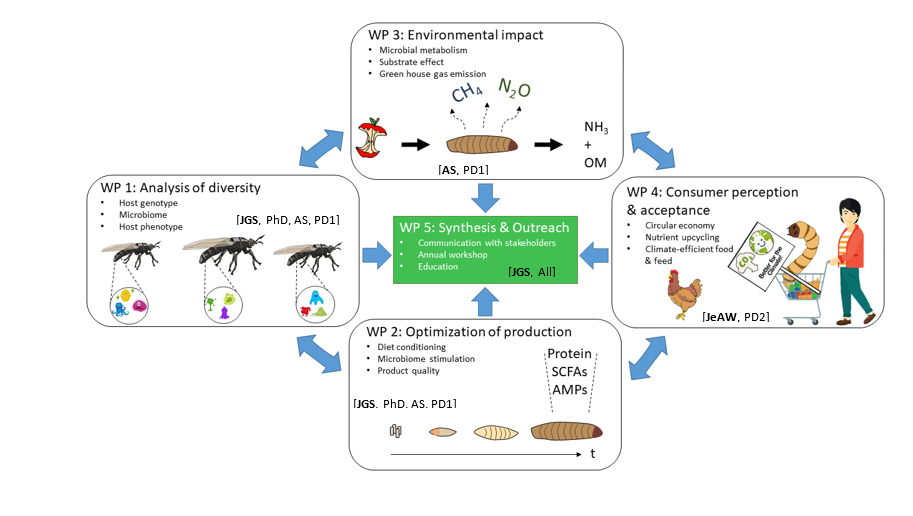We propose a research strategy (Fig. 1) that starts with mapping out the genetic and microbiome diversity on growth quantity and quality in BSFL production strains (WP1), and will use the information gained in the experimental design to optimize resource efficiency (WP2) and limit GHG emission (WP3) during BSFL production. WP4 will investigate consumer acceptance based on health and environmental benefits of insect products (building on WP2 & 3), and will feed-back on feed and production choices in WP2 & WP3. Finally, WP5 makes sure results are properly communicated to stakeholders and the public, and utilized in the education of the next generation of researchers.
